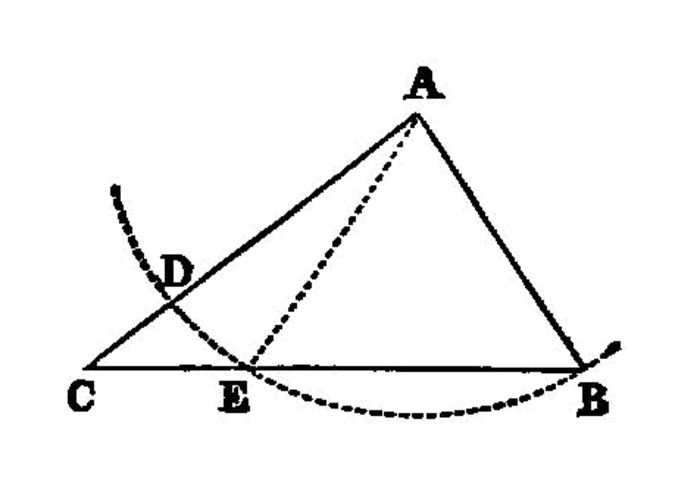Proposition I.18

In any triangle the greater side subtends the greater angle.
For let ABC be a triangle having the side AC greater than AB;
I say that the angle ABC is also greater than the angle BCA.
For, since AC is greater than AB, let AD be made equal to AB I.3, and let BD bejoined.
Then, since the angle ADB is an exterior angle of the triangle BCD,
it is greater than the interior and opposite angle DCB. I.16
But the angle ADB is equal to the angle ABD,
- since the side
ABis equal toAD; therefore the angleABDis also greater than the angleACB; therefore the angleABCis much greater than the angleACB. 1
Therefore etc.
- Q. E. D.
References
Footnotes
-
Number
In the enunciation of this number we haveὑποτείνειν (subtend
) used with the simple accusative instead of the more usualὑπό with accusative. The latter construction is used in the enunciation of I. 19, which otherwise only differs from that of I. 18 in the order of the words. The point to remember in order to distinguish the two is that thedatum comes first and thequaesitum second, thedatum being in this proposition the greater side and in the next the greater angle. Thus the enunciations are (I. 18)παντὸς τριγώνου ἡ μείζων πλευρὰ τὴν μείζονα γωνίαν ὑποτείνει and (I. 19)παντὸς τριγώνου ὑπὸ τὴν μείζονα γωνίαν ἡ μείζων πλευρὰ ὑποτείνει . In order to keep the proper order in English we must use the passive of the verb in I. 19. Aristotle quotes the result of I. 19, using the exact wording,ὑπὸ γὰρ τὴν μείζω γωνίαν ὑποτείνει (Meteorologica III. 5, 376 a 12
